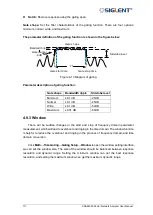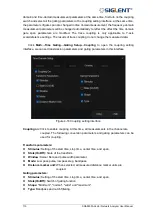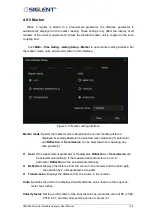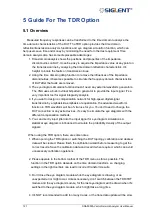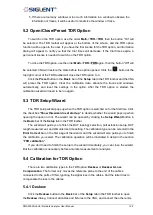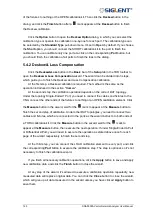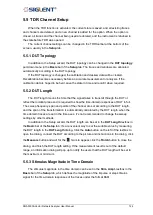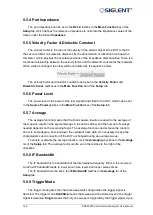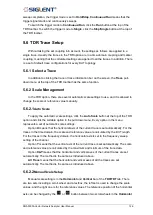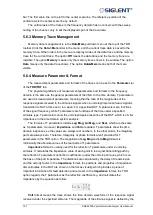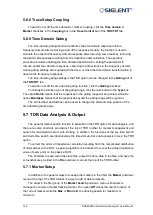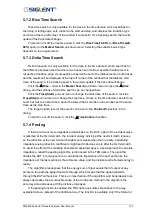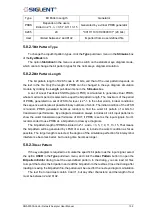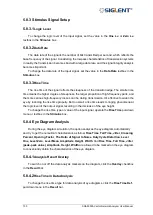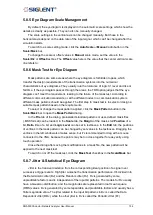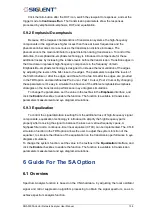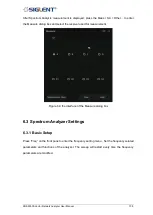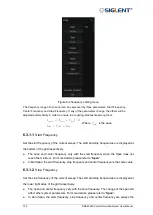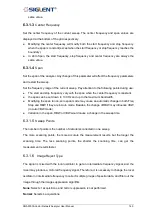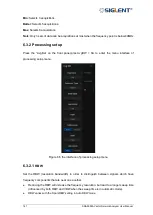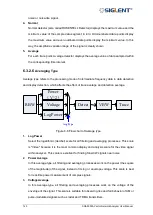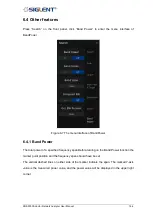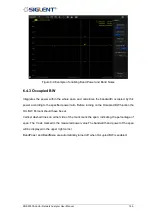
131 SNA5000A Vector Network Analyzer User Manual
the trace is
Impedance
of the reflection T parameters. To switch on or off the function, click
the
Peeling
checkbox in the
Parameter
bar of the
TDR/TDT
tab.
5.7.5
File & Data Output
In the
File
pull-down menu at the top of the TDR toolbar, there are some shortcuts for file
operation and data output.
The order
Save State...
is used to save the current state and calibration data as a ..CSA
file, and
Recall State...
is used to restore them from the files.
The order
Save Trc Data...
is used to save the current trace data to .CSV file, and
Save
SnP...
saves all available S parameters data as an .SNP file whose format depends on the
DUT topology.
Screenshot...
is used to save the screenshot as a .PNG file.
5.8 Eye Diagram Simulation
5.8.1
Overview
Eye diagrams are used to analyze the influence of the intersymbol interference and
noise on transmission performance, which is an important tool for signal integrity analysis.
The eye diagram simulation function, included with the TDR option, is built on a virtual digital
signal generator and the frequency characteristics of the DUT. It simulates that a virtual input
digital signal transmits through the DUT, and analyzes the output signal to get an eye
diagram. This is different from the traditional way of using an oscilloscope to draw eye
diagrams. There is no need to provide an external digital signal to the input port of the DUT.
To simulate different input signals, change the stimulus settings in the eye diagram module.
The data analysis of eye diagrams in the option will try to get the numerical
characteristics of the diagram and mark them on the diagram if required, which is designed to
help the users obtain the key information quickly.
The jitter injection and statistical eye diagram function are provided to analyze the
influence of the jitter in the input signal on the transmission performance.
The mask test on the eye diagram and preinstalled mask patterns are a convenient
method of estimating whether the eye diagram meets the design requirements.
To start an eye diagram simulation after completing the simulation settings, click the
Draw Eye
button in the
Trigger
box of the
Eye/Mask
tab.
5.8.2
Stimulus Bit Pattern
There are 3 bit pattern types to choose in the option: Pseudo-Random Binary Sequence
(PRBS), K28.5 comma code, and the user's bit pattern.
For more information about PRBS, refer to the section
. K28.5 comma
code is defined in an industry-standard developed by IBM which includes comma (control)
characters. The user's bit pattern is imported from the user-defined files. The introduces of the
bit pattern types in the table as follow:
Summary of Contents for SNA5000A Series
Page 2: ......

